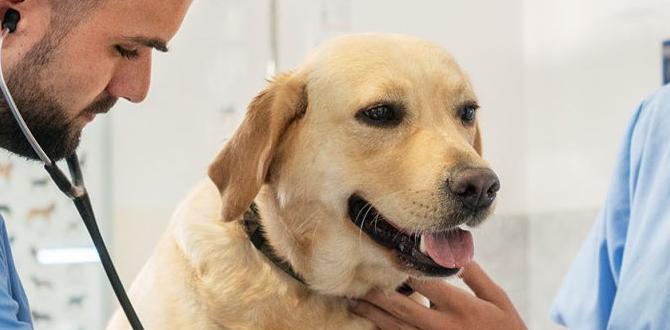Dog Pack Mentality in Older Dogs is a fascinating aspect of canine behavior that often gets overlooked as our furry companions enter their golden years. While we might associate the term “pack” with young, energetic dogs displaying dominance hierarchies, the inherent social nature of dogs, their pack instincts, continues to shape their interactions and well-being throughout their lives, especially in senior dogs. Understanding this innate drive can unlock new avenues for enriching the lives of our aging pets, fostering better communication, and strengthening the bond we share.
As dogs age, their physical and cognitive abilities may shift. This doesn’t mean their fundamental social programming disappears. Instead, the expression of their pack instincts can evolve. In a human family, an older dog might still feel a deep sense of belonging and seek to maintain their place within this “pack.” This can manifest in subtle ways. They might become more reliant on their familiar humans for cues and reassurance, a behavior that mirrors how younger dogs would look to a pack leader. Their desire for proximity to their family members can intensify, seeking out comfort and security in their presence. It’s not uncommon to see senior dogs wanting to be in the same room (even if they are napping) as their people, a quiet testament to their enduring social needs.
Understanding Dog Pack Mentality in Older Dogs: More Than Just Company
The “pack” for an older dog often coalesces around their human family, but it can also include other pets in the household. While physical play might decrease, the social dynamics can remain robust. This can be observed in how they interact with younger, more boisterous dogs. Instead of outright confrontation, an older dog might employ more nuanced strategies to assert their seniority or maintain their established social standing within the “pack.” This could involve subtle body language – a slower wag of the tail, a direct gaze that conveys authority, or a gentle nudge – rather than overt displays of aggression. They have learned the art of diplomacy through years of experience.
This instinct for social order and belonging is crucial for a senior dog’s emotional health. Loneliness and isolation can be detrimental to their well-being, potentially exacerbating age-related anxieties or cognitive decline. By recognizing their inherent need to be part of a social group, we can make conscious efforts to include them in daily activities. Even if they can’t participate in strenuous outings, their presence and the feeling of being “along for the ride” can be incredibly comforting. This reinforces their value and sense of purpose within their family unit, a vital aspect of their adapted dog pack mentality in older dogs.
Nurturing the Pack Dynamic with Senior Companions
As owners, we play a pivotal role in how older dogs perceive their place in the pack. Providing a consistent and predictable routine is paramount. This routine acts as a form of leadership, offering security and a clear structure that senior dogs often crave. Regular feeding times, consistent walking schedules (even if shorter), and predictable mealtimes all contribute to this sense of order. When senior dogs know what to expect, they feel more secure, which directly impacts their overall well-being and their perception of their place within the family pack.
Socialization, even for older dogs, remains important. While they might not need the same level of exposure to novel environments as puppies, maintaining positive interactions with familiar people and animals can be beneficial. This could involve gentle greetings with well-behaved, known dogs or quiet visits from trusted friends. These interactions provide mental stimulation and reaffirm their social connections, preventing them from becoming socially withdrawn. It’s about quality over quantity when it comes to senior socialization, focusing on experiences that are positive and low-stress.
Harnessing Dog Pack Mentality in Older Dogs for Training and Connection
The inherent desire of dogs to be part of a pack can be a powerful tool for continued training and engagement with senior dogs. While advanced obedience might be less of a focus, reinforcing basic commands and introducing simple new tricks can keep their minds sharp and engaged. Using positive reinforcement, such as verbal praise, gentle petting, and occasional high-value treats, taps into their innate desire to please their pack leader (you). This collaborative effort strengthens the social bond and provides mental stimulation that is crucial for cognitive health in aging dogs.
Consider incorporating your senior dog into your daily routines in ways that acknowledge their pack status. If you’re reading in the living room, invite them to lie at your feet. If you’re doing some light gardening, let them supervise from a comfortable spot nearby. These simple acts of inclusion reinforce their belonging and contribute to their emotional security. It’s about acknowledging that their role in the pack may have shifted from active participant to valued observer, but their desire to be part of it remains strong.
Moreover, observing your older dog’s interactions can provide valuable insights into their comfort levels and social needs. Do they seek out the company of specific family members? Do they show subtle signs of stress around certain individuals or animals? Understanding these cues allows you to better manage their environment and ensure they feel safe and accepted within their pack. This heightened awareness is part of effectively managing dog pack mentality in older dogs, ensuring their twilight years are filled with companionship and security.
In essence, the dog pack mentality in older dogs is not a relic of their youth but a dynamic and evolving aspect of their social nature. By understanding, respecting, and actively nurturing this inherent drive, we can significantly enhance the quality of life for our senior canine companions, fostering deeper connections and ensuring they continue to feel like cherished, integral members of our family packs for all their years. It’s a journey of continued companionship, built on the foundation of their innate social instincts.
Meet Elyse Colburn, the devoted canine companion and storyteller behind the enchanting world of “Tales, Tails, and Adventures Unleashed.” A passionate dog enthusiast with a heart full of paw prints, Elyse Colburn shares heartwarming tales and insightful adventures, celebrating the joy, loyalty, and endless antics that make every dog a true hero. Join Elyse Colburn on this tail-wagging journey, where every post is a love letter to our four-legged friends.






